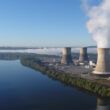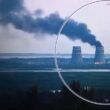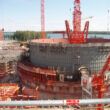Fact check: Nuclear energy has an important role in US energy policy — with or without footnotes
By Tony Pietrangelo, October 20, 2011
With all due respect to scientists and peer-reviewed journals, the notion espoused on the roundtable on September 22 that facts are only facts if uttered by a scientist or published in a peer-reviewed journal is foolish on its face. To help along those who might miss the real-world forest for the footnoted trees, here are a few references that may help:
• With regard to emissions, analyses conducted over the past decade by the University of Wisconsin, by British Energy in 2005 and 2006, and in Germany confirm that nuclear energy compares very well on life-cycle and other environmental bases to other electric-generating technologies.
• With regard to terrorism, readers are encouraged to review a summary of a yearlong aircraft-impact analysis conducted by the Electric Power Research Institute following the September 11, 2001, terrorist attacks on the United States. Also, a compilation of statements from security experts on the strength of nuclear facilities’ protective systems is available.
• For information on costs, a white paper — footnoted! — is available that summarizes analyses conducted of comparative costs of various electric-generating technologies. More evidence on nuclear energy’s cost-competitiveness comes in these public utilities commissions’ forward-projection analyses, known as determination of needs. The public utility commissions in the states of Georgia (request docket No. 27,800), South Carolina, and Florida concluded that new nuclear energy facilities best met their generation demands from a cost and environmental perspective.
• Lastly, though I don’t have a footnote for them, one or two East Coast readers might be willing to verify the occurrence of the August 23 earthquake in Virginia and the subsequent weekend’s Hurricane Irene. Nuclear energy facilities proved their ability to withstand extreme events on both occasions.
The bottom line is that, in the coming decades, we will be challenged to simultaneously meet rising electricity demand and reduce emissions of greenhouse gases. To meet this challenge, the United States must establish a comprehensive and sustainable national energy policy that supports the development of technology-based, low-carbon solutions. It’s hard to conceive of an energy policy that does not include a critical role for nuclear technology.
Topics: Nuclear Energy
Share: [addthis tool="addthis_inline_share_toolbox"]














